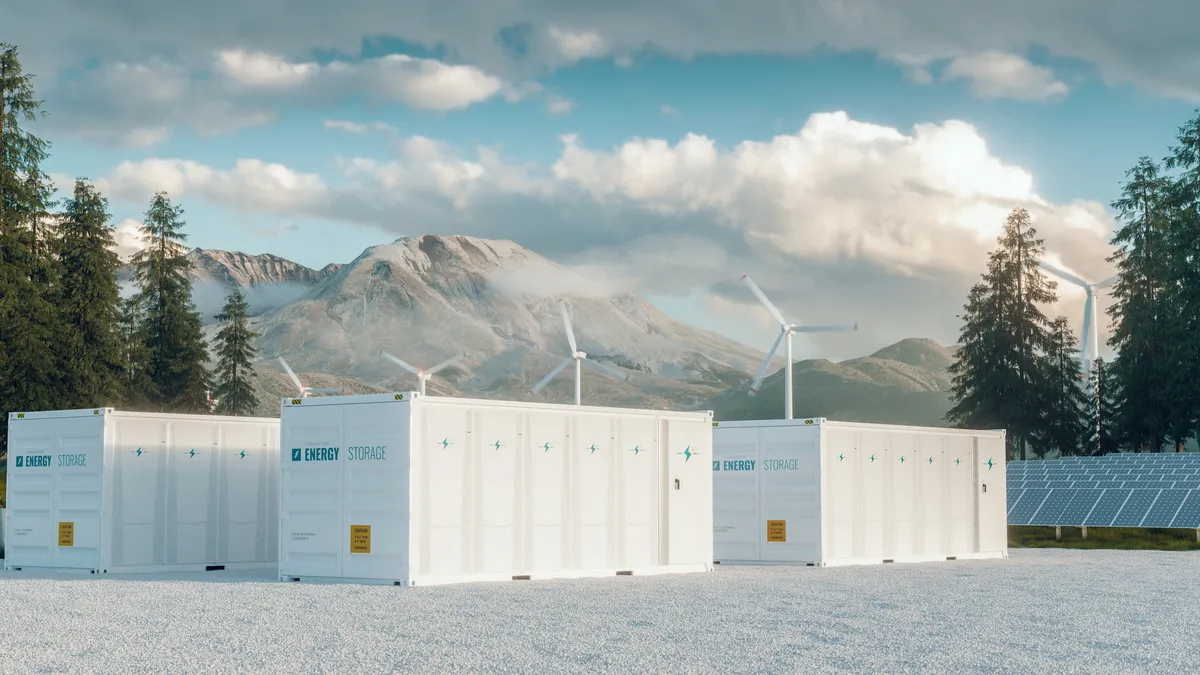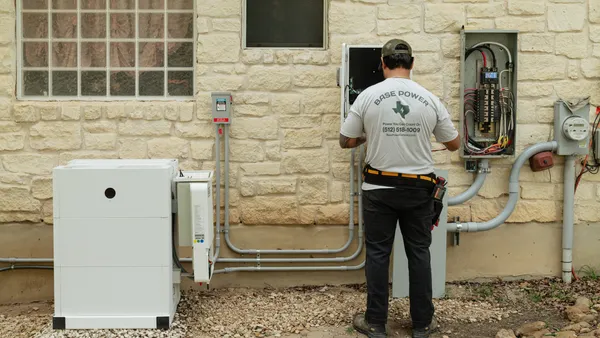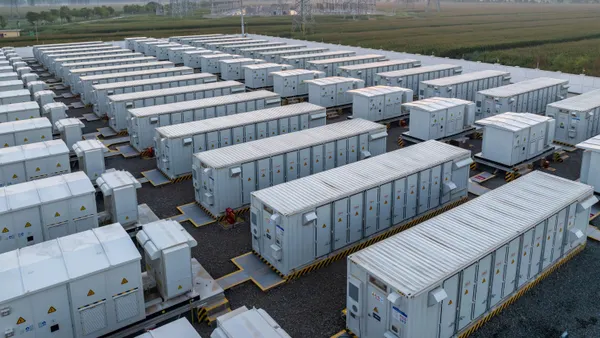Dive Brief:
- Significant deployment of energy storage can successfully balance load and meet demand at all hours while also helping electricity grids run more efficiently, according to a new report from the National Renewable Energy Laboratory (NREL).
- NREL researchers modeled high storage scenarios and found that, by 2050, sufficient storage deployment would allow the grid to operate with no unserved energy and low reserve violations.
- Additionally, the ability of storage to meet peak demand at times when solar generation is low can improve the efficiency of thermal generation, even allowing grid operators to avoid starting up generators and peaker plants altogether, according to the report. That would also bring down carbon dioxide (CO2) emissions and other air pollutants.
Dive Insight:
The report is the sixth in NREL’s Storage Futures Study (SFS), which uses advanced modeling to explore how energy storage will influence the electricity grid. Previous reports in the series have shown a variety of scenarios to boost the role of storage, including the potential for U.S. storage capacity to exceed 125 GW by the end of 2050, more than five times the current capacity. The SFS has also found that energy storage provides its greatest value when meeting peak demand, especially when solar generation increases and peak demand shifts later into the evening.
The latest report uses NREL’s Regional Energy Deployment System (ReEDS) model, a national-scale planning tool for the power sector, to examine future scenarios where storage capacity in 2050 ranged from 213 GW to 932 GW. (According to NREL, the U.S. has 23 GW of storage as of 2021, most of which is pumped storage hydropower. The Energy Information Administration found the U.S. had 1,650 MW of battery storage installed at the end of 2019, but was poised to have ten times that by 2024.) That level of installation, the report found, was aligned with significant solar installation and was able to meet peak load, despite concerns about the variability in solar generation.
Although energy storage technology has a low annual capacity factor because of its need to recharge, the study found that it would be utilized significantly – more than 75% of capacity – during the top 10 net load hours, when demand is highest. The findings suggest that storage would be used heavily on a daily basis and would need to be charged during the day when solar production is at its highest.
"Essentially, the storage technology plays a key role during peak demand when the power system needs energy and capacity the most," said Jennie Jorgenson, NREL researcher and lead author of the study. "We find this consistently across all scenarios and years through 2050."
Additionally, the ReEDS model found that the high storage penetration led to overall higher efficiency. The analysis considered a scenario where 660 GW of storage is deployed, then adjusted it in 5% (roughly 33 GW) increments. Under high-end scenarios, the number of natural gas combustion turbine starts from peaker plants drops from 400 per day (in a reference case with 80% storage penetration) to as low as five (in a scenario with high natural gas and low battery costs and the highest storage capacity). The increase in battery capacity was also matched by a decrease in CO2 emissions and criteria air pollutants. Further analysis could shed more light on the health benefits of those reductions, the report said.
The flexibility of storage also allowed arbitrage across regions, resulting in more flow across transmission lines that enables the use of the lowest-cost resource mix, while also reducing congestion on some lines, according to the report. While the direct transmission effects varied by region, the analysis suggests that greater transmission assets could accompany a high storage scenario.
Coming as electricity grid operators are crafting rules to best integrate storage onto the grid and allow it to participate in the electricity markets, the findings suggest that batteries and other storage tools could play a significant role in maintaining reliability.
"We once again find that the potential future energy system with large quantities of energy storage could successfully balance load 24/7," said Jorgenson.












